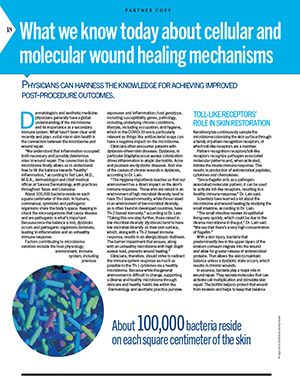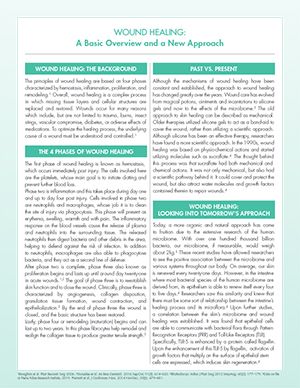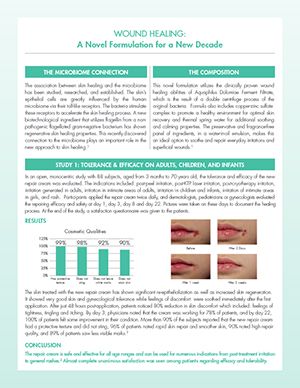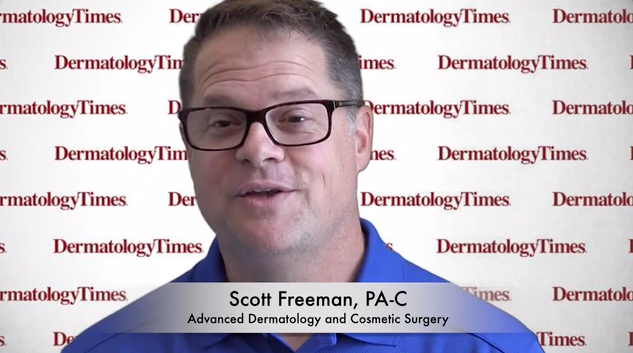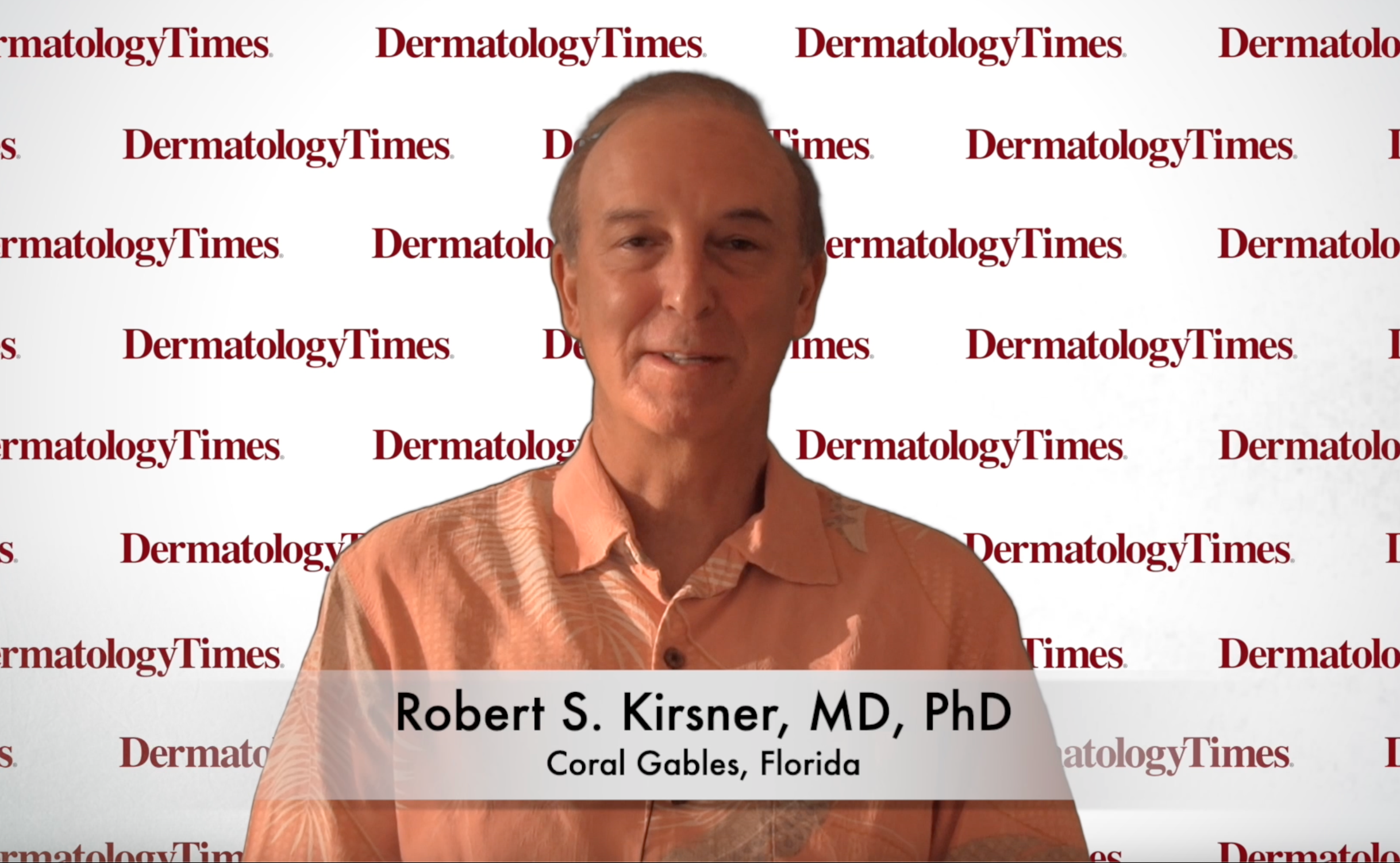- Acne
- Actinic Keratosis
- Aesthetics
- Alopecia
- Atopic Dermatitis
- Buy-and-Bill
- COVID-19
- Case-Based Roundtable
- Chronic Hand Eczema
- Chronic Spontaneous Urticaria
- Drug Watch
- Eczema
- General Dermatology
- Hidradenitis Suppurativa
- Melasma
- NP and PA
- Pediatric Dermatology
- Pigmentary Disorders
- Practice Management
- Precision Medicine and Biologics
- Prurigo Nodularis
- Psoriasis
- Psoriatic Arthritis
- Rare Disease
- Rosacea
- Skin Cancer
- Vitiligo
- Wound Care
Article
Sponsored Content
Cellular and Molecular Mechanisms of Wound Healing
As research into the role of the microbiome continues, physicians are learning more about its role in skin health. Studies have connected imbalances in the skin microbiome with atopic dermatitis, psoriasis, acne — as well as with complications in wound healing. Investigators have now isolated a bacterial protein that appears to play a role in skin renewal. Acting as a postbiotic, this protein can stimulate the skin healing process. The following resources will provide more background into the study findings and their practical implications.
You'll learn:
- Insight into the role of Toll-like receptors
- The cellular component of the innate immune response as it relates to inflammation and healing
- How activating certain TLRs has been shown to affect wound healing
What we know today about cellular and molecular wound healing mechanisms
Physicians can harness the knowledge for achieving improved post-procedure outcomes.
Dermatologists and aesthetic medicine physicians generally have a global understanding of the microbiome and its importance as a secondary immune system. What hasn’t been clear until recently and plays a vital role in skin health is the connection between the microbiome and wound repair.
Webinar: Cellular and molecular mechanisms of wound healing
Ted Lain, M.D., M.B.A., dermatologist and chief medical officer at Sanova Dermatology, discusses the microbial factors at work in the wound healing process, studies that shed light on how the microbiome contributes to skin hemeostasis and ways in which these findings are being applied in new products that support skin repair.
More resources
Wound Healing: A basic overview and a new approach
Recent studies have allowed researchers to see the positive association between the microbiome and the skin restoration process. Download the white paper.
Wound Healing: Inspiration from the intestine and a new postbiotic active ingredient
Research on the microbiome has led to the discovery of a bacterial protein that appears to play a role in the skin renewal and healing process. Download the white paper
Wound Healing: A novel formulation for a new decade
A skin repair cream that incorporates a new postbiotic biotechnological active ingredient derived from a bacterium has demonstrated efficacy and is well tolerated in adults and children with a variety of skin irritations. Download the white paper.
Newsletter
Like what you’re reading? Subscribe to Dermatology Times for weekly updates on therapies, innovations, and real-world practice tips.

